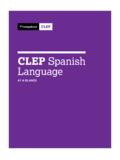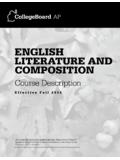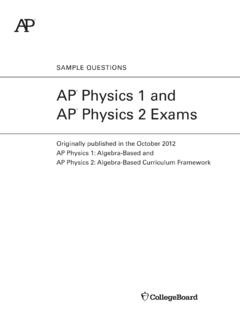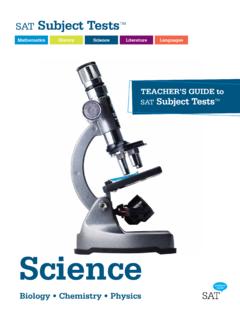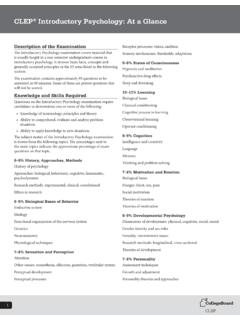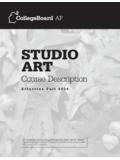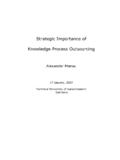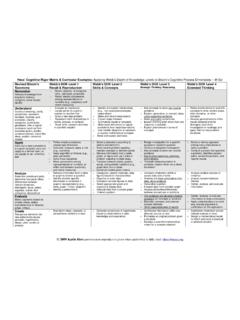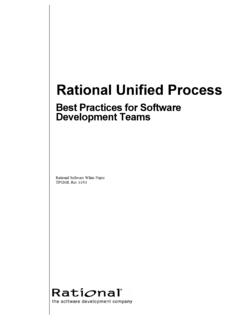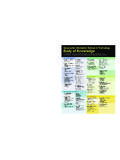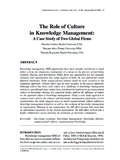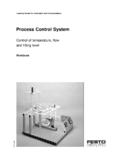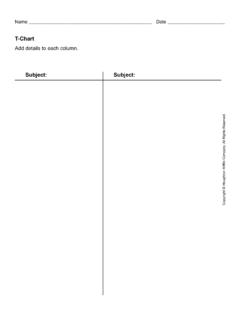Transcription of 2012–2013 - media.collegeboard.com
1 AP BIOLOGYC urriculum Framework2012 2013 The College BoardAbout the College BoardThe College Board is a mission-driven not-for-profit organization that connects students to college success and opportunity. Founded in 1900, the College Board was created to expand access to higher education. Today, the membership association is made up of more than 5,900 of the world s leading educational institutions and is dedicated to promoting excellence and equity in education. Each year, the College Board helps more than seven million students prepare for a successful transition to college through programs and services in college readiness and college success including the SAT and the Advanced Placement Program . The organization also serves the education community through research and advocacy on behalf of students, educators and further information, visit 2011 The College Board.
2 College Board, Advanced Placement Program, AP, SAT and the acorn logo are registered trademarks of the College Board. inspiring minds is a trademark owned by the College Board. All other products and services may be trademarks of their respective by the College Board in February Biology: Curriculum Framework 2012 2013 2011 The College BoardiiiContentsIntroduction ..1 The Emphasis on Science Practices ..1 Overview of the Concept Outline ..2 The Concept Outline ..4 Big Idea 1: The process of evolution drives the diversity and unity of life..4 Big Idea 2: Biological systems utilize free energy and molecular building blocks to grow, to reproduce and to maintain dynamic homeostasis..15 Big Idea 3: Living systems store, retrieve, transmit and respond to information essential to life processes..37 Big Idea 4: Biological systems interact, and these systems and their interactions possess complex properties.
3 64 Science Practices for AP Biology ..81 Science Practice 1: The student can use representations and models to communicate scientific phenomena and solve scientific problems..81 Science Practice 2: The student can use mathematics appropriately..82 Science Practice 3: The student can engage in scientific questioning to extend thinking or to guide investigations within the context of the AP course..82 Science Practice 4: The student can plan and implement data collection strategies appropriate to a particular scientific question..83 Science Practice 5: The student can perform data analysis and evaluation of evidence..84 Science Practice 6: The student can work with scientific explanations and theories..84 Science Practice 7: The student is able to connect and relate knowledge across various scales, concepts and representations in and across domains.
4 85 References ..87 Appendix ..88AP Biology Concepts at a Biology: Curriculum Framework 2012 2013 Return to the Table of Contents 2011 The College Board1 IntroductionGiven the speed with which scientific discoveries and research continuously expand scientific knowledge, many educators are faced with the challenge of balancing breadth of content coverage with depth of understanding. The revised AP Biology course addresses this challenge by shifting from a traditional content coverage model of instruction to one that focuses on enduring, conceptual understandings and the content that supports them. This approach will enable students to spend less time on factual recall and more time on inquiry-based learning of essential concepts, and will help them develop the reasoning skills necessary to engage in the science practices used throughout their study of AP Biology.
5 To foster this deeper level of learning, the breadth of content coverage in AP Biology is defined in a way that distinguishes content essential to support the enduring understandings from the many examples or applications that can overburden the course. Illustrative examples are provided that offer teachers a variety of optional instructional contexts to help their students achieve deeper understanding. Additionally, content that is outside the scope of the course and exam is also who take an AP Biology course designed using this curriculum framework as its foundation will also develop advanced inquiry and reasoning skills, such as designing a plan for collecting data, analyzing data, applying mathematical routines, and connecting concepts in and across domains. The result will be readiness for the study of advanced topics in subsequent college courses a goal of every AP Emphasis on Science PracticesA practice is a way to coordinate knowledge and skills in order to accomplish a goal or task.
6 The science practices enable students to establish lines of evidence and use them to develop and refine testable explanations and predictions of natural phenomena. Because content, inquiry and reasoning are equally important in AP Biology, each learning objective described in the concept outline combines content with inquiry and reasoning skills described in the science practices. The science practices that follow the concept outline of this framework capture important aspects of the work that scientists engage in, at the level of competence expected of AP Biology students. AP Biology teachers will see within the learning objectives how these practices are effectively integrated with the course content, and will be able to design instruction with these practices in Biology: Curriculum Framework 2012 2013 Return to the Table of Contents 2011 The College Board2 Overview of the Concept OutlineThe key concepts and related content that define the revised AP Biology course and exam are organized around a few underlying principles called the big ideas, which encompass the core scientific principles, theories and processes governing living organisms and biological systems.
7 For each of the big ideas, enduring understandings, which incorporate the core concepts that students should retain from the learning experience, are also identified. Each enduring understanding is followed by statements of the essential knowledge necessary to support it. Unless otherwise specified, all of the details in the outline are required elements of the course and may be included in the AP Biology Exam. To help teachers distinguish content that is essential to support the enduring understandings from the many possible examples and applications that can overburden a course and to see where important connections exist among the different content areas particular content components are emphasized as follows: Underlying content that must also be taught in order for students to achieve an understanding of a particular required concept is specified in detail.
8 These additional underlying content components are listed numerically under the required concept and are always preceded by the following preamble: Evidence of student learning is a demonstrated understanding of each of the following: Illustrative examples are suggested contexts for instructional purposes and are not required content components of the course. A student s knowledge of these contexts will not be assessed on the AP Biology Exam. Nevertheless, the illustrative examples provide suggestions for teachers that will support student understanding of a particular required concept. Illustrative examples can also lend themselves to case studies or project-based lessons. Teachers are free to use their own examples. The choice of which illustrative example to use (from those that are listed or elsewhere) should be selected according to the availability of data, regional relevance, interests of the students and expertise of the instructor.
9 Illustrative examples are designated as bulleted statements and are always preceded by the following preamble: To foster student understanding of this concept, instructors can choose an illustrative example such as: Exclusion statements define content, or specific details about the content, that do not need to be included in the course because teaching this level of detail does not foster students conceptual understanding. These details will not be assessed on the AP Biology Exam. Exclusion statements are denoted as shown in this example: Memorization of the names, molecular structures and specific effects of all plant hormones are beyond the scope of the course and the AP Exam. Note: While illustrative examples and excluded content will not be assessed on the AP Biology Exam, they may be provided in the body of exam questions as background information for the concept and science practice(s) being Biology: Curriculum Framework 2012 2013 Return to the Table of Contents 2011 The College Board3 Concept and content connections are denoted in brackets ( , [See also ]) and indicate where an overlap, or further clarification or application, of concepts and content exists.
10 For example, the statement in : Continuity of homeostatic mechanisms reflects common ancestry, while changes may occur in response to different environmental conditions is connected to the concepts and supporting content in , relating to how organisms share many conserved core processes and features that evolved and are widely distributed among organisms today. Learning objectives provide clear and detailed articulation of what students should know and be able to do. Each learning objective is designed to help teachers integrate science practices with specific content, and to provide them with clear information about how students will be expected to demonstrate their knowledge and abilities. Learning objectives are numbered to correspond with each Big Idea ( , LO ). Alignment of the learning objectives to the science practices (detailed in Section III) is denoted in brackets.
